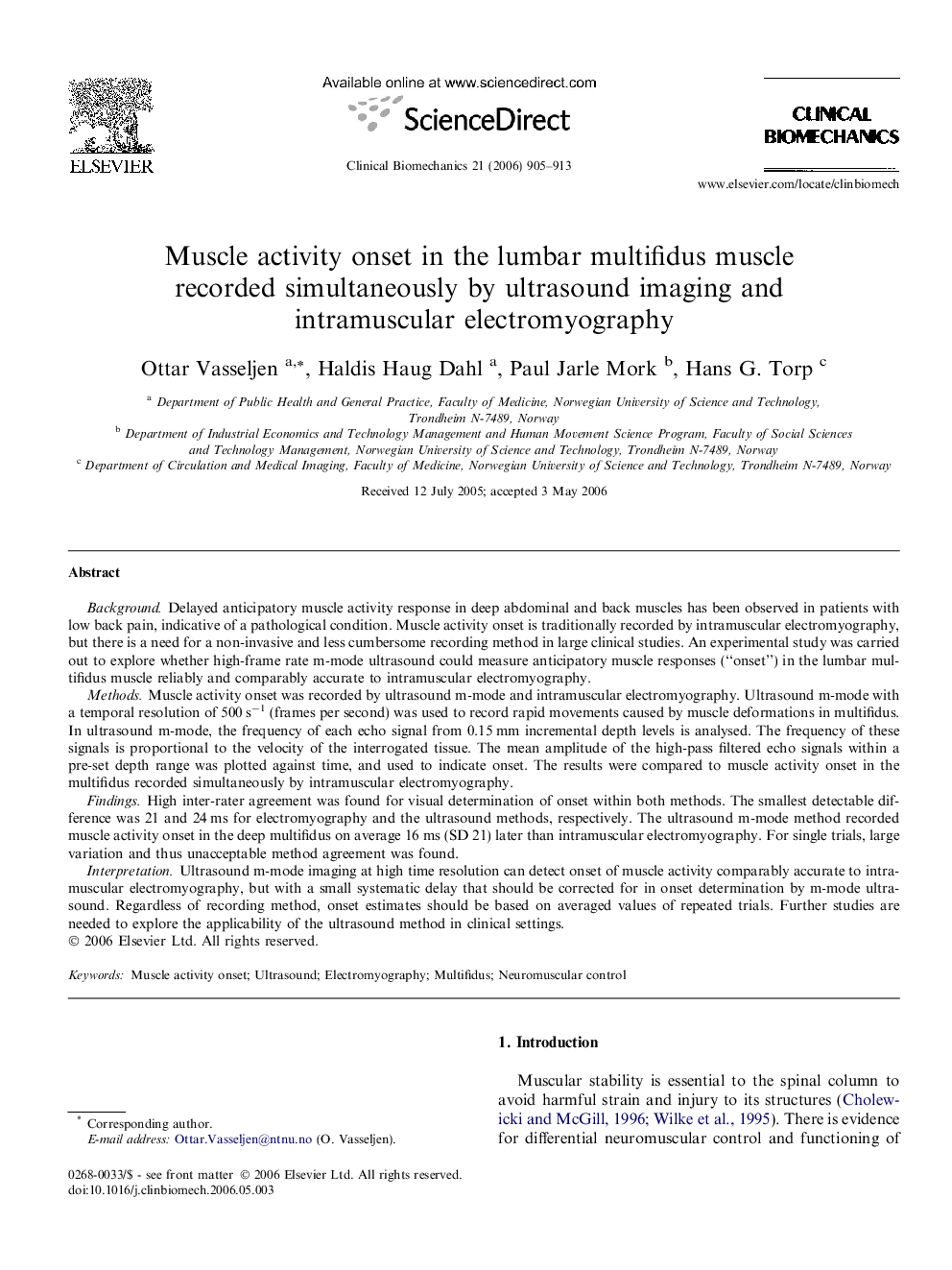| Article ID | Journal | Published Year | Pages | File Type |
|---|---|---|---|---|
| 4051344 | Clinical Biomechanics | 2006 | 9 Pages |
BackgroundDelayed anticipatory muscle activity response in deep abdominal and back muscles has been observed in patients with low back pain, indicative of a pathological condition. Muscle activity onset is traditionally recorded by intramuscular electromyography, but there is a need for a non-invasive and less cumbersome recording method in large clinical studies. An experimental study was carried out to explore whether high-frame rate m-mode ultrasound could measure anticipatory muscle responses (“onset”) in the lumbar multifidus muscle reliably and comparably accurate to intramuscular electromyography.MethodsMuscle activity onset was recorded by ultrasound m-mode and intramuscular electromyography. Ultrasound m-mode with a temporal resolution of 500 s−1 (frames per second) was used to record rapid movements caused by muscle deformations in multifidus. In ultrasound m-mode, the frequency of each echo signal from 0.15 mm incremental depth levels is analysed. The frequency of these signals is proportional to the velocity of the interrogated tissue. The mean amplitude of the high-pass filtered echo signals within a pre-set depth range was plotted against time, and used to indicate onset. The results were compared to muscle activity onset in the multifidus recorded simultaneously by intramuscular electromyography.FindingsHigh inter-rater agreement was found for visual determination of onset within both methods. The smallest detectable difference was 21 and 24 ms for electromyography and the ultrasound methods, respectively. The ultrasound m-mode method recorded muscle activity onset in the deep multifidus on average 16 ms (SD 21) later than intramuscular electromyography. For single trials, large variation and thus unacceptable method agreement was found.InterpretationUltrasound m-mode imaging at high time resolution can detect onset of muscle activity comparably accurate to intramuscular electromyography, but with a small systematic delay that should be corrected for in onset determination by m-mode ultrasound. Regardless of recording method, onset estimates should be based on averaged values of repeated trials. Further studies are needed to explore the applicability of the ultrasound method in clinical settings.
